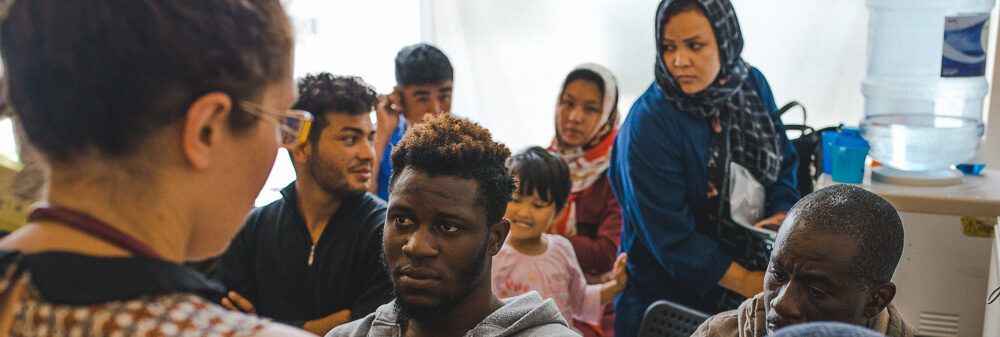Witnessing the current intensification of pushback at the Turkish-Greek borders, an old legal querelle returns to the scene: is there a way to legally prevent pushback? Do the International Conventions and European legal framework offer an efficient and timely tool able to frustrate these actions? Unfortunately, the answer is far from being undisputed, nevertheless the latest interim measures granted by the ECHR give new hope.
Interlinked legal prohibitions
“Pushback” is not a legal term, but rather a concept with different political implications which needs to be assessed in the light of specific circumstances. The concept of “pushing back” is commonly intended as the violation of the legal obligation to rescue a person in distress at sea, thus denying help as provided by the art. 98(1) of the United Nations Convention on the Law of the Sea (UNCLOS). Another interpretation of this “unclear” conduct grounds its legal basis on the fact that it is illegal to bring or return displaced person to places where they face “immediate torture, inhuman treatment or other serious rights violations”, as provided for in the Convention Relating to the Status of Refugees and the European Convention on Human Rights. Moreover, Article 4 of Protocol No. 4 to the European Convention on Human Rights, prohibits the collective expulsion of aliens. However, what seems self-explanatory in theory is far more problematic in practice.
Article 33(1) of the 1951 Refugee Convention affirms that states are prohibited from “expel[ling] or return[ing] a refugee in any manner whatsoever to the frontiers of territories, where his life or freedom would be threatened on account of race, religion, nationality, membership of a particular social group or political opinion.” This principle has evolved into a norm of customary international law and it has crucial importance in determining the lawfulness of such actions. In order to return someone to a country it is not sufficient per se that a country has been recognized as “safe”, but a further specific assessment must be conducted. Accordingly, the Special Rapporteur on the Human Rights of Migrant clarified that pushbacks result in human rights violations also when an individual assessment has not been carried out properly. The Rapporteur indeed highlights what the prohibition of collective expulsion has already foreseen, namely the generic prohibition to expel aliens, except where such a measure is taken on the basis of a reasonable and objective examination of the particular case of each individual alien of the group.
In the famous case Hirsi Jamaa and Others v. Italy [GC], where Somali and Eritrean citizens were disembarked in Libya without any personal assessment, the Court acknowledged the collective nature of the expulsion. Furthermore, in Sharifi and Others v. Italy and Greece, the Court reached the same conclusion on the basis of a lack of individual analysis of the personal situation of asylum seekers. On the other hand, a recent ruling from the ECtHR introduces new alarming patterns which may frustrate the entire purpose of the prohibition of collective expulsion. In the case, A.A. and others v. North Macedonia dated 5 April 2022, the Court vehicles the massage that collective expulsions can be justified when the existence of legal routes, such as “access point”, would have allowed the applicants to seek protection in the State (North Macedonia), despite conflicting evidence concerning its feasibility. This ruling recalls the orientation presented in N.D. and N.T. v. Spain [GC] where the Court affirmed that states may refuse entry to their territory to aliens if the alien deliberately refuses to comply with standards procedures, such as existing “access points”. As a resulting principle, an exile will see satisfaction in his right to seek asylum for as long as returning this person does not amount to refoulement.
In our opinion, the formal existence of official entry points at the borders does not guarantee fair and efficient access to the asylum procedure for those seeking protection, and even less justify collective expulsions at the border. On the contrary, people on the move should be able to, firstly, approach said “access points” and secondly lodge their claim and see it fairly and properly assessed, without taking the risk of being pushed back or detained.
Contextual analysis of the situation at the Turkish-Greek border
Amid deep criticism and evidence of ill-treatment and pushbacks at multiple entry points at land and sea borders, the issue of pushback cannot be denied anymore. However, despite public condemnation, awareness building campaigns and tireless work of the grassroots organization, the Greek government keeps pushing back people who already access its territory, as documented by several NGOs monitoring the situation on the ground. Asylum seekers find themselves stuck a few kilometers from the Evros’border, exhausted and without any food supply. In the impossibility of seeking help for the fear of being returned to Turkey, they undertake unbearable journeys hoping to see their claims registered. However, once they reach the only registration centre in the region located in Fylakio, they face the risk of being detained for months until they will receive the decision on their asylum claim. Bog in this dreadful limbo, asylum seekers must choose between being pushed back or detained. How do face this impasse?
Rule 39: A useful tool?
The primary scope of Rule 39 of The European Court of Human Rights is to indicate interim measures to any State party to the European Convention on Human Rights. Interim measures are urgent measures which, according to the Court’s well-established practice, apply only where there is an imminent risk of irreparable harm. In case of such a situation, the European Court requests the state to comply with its request. Cases of application of Rule 39 usually concern the right to life (Article 2) and the right not to be subjected to torture or inhuman or degrading treatment or punishment (Article 3), but not exclusively. Accordingly, the main purpose of this measure is to offer protection in a timely manner, when the state is assumed to not do so.
In case of pushbacks, due to time constraints alongside the imminent danger to the life of people concerned, the Court should be as responsive as possible. However, the initial responsibility to substantiate an individual application relies on the applicant, who has to specify and circumscribe her/his claim. In other words, the applicant must explain in detail why s.he is at risk, also referring to past experiences. The applicant’s life story should, where possible, be substantiated by documentary evidence because the Court assesses the claim based on the evidence provided by the applicant as well as the credibility in terms of consistency and coherency of allegations. The ultimate goal of this request is to convince the Court that the applicant has proven and sufficient grounds to fear that if returned to another country, she/he will face irreparable harm.
The question that obviously arises is the following: how is it possible to expect the applicant to meet these standards when she/he is in such a distressful situation?
As the most recent decisions have shown, the Court seems to have acknowledged the gravity of pushback. Indeed, on 22 February 2022, the Court for the first time issued a decision ordering that pushback from the Greek islands should not take place, following a request of the Aegean Boat Report. On 29 April 2022, the ECtHR also granted interim measures for a group of 12 Syrian refugees, amongst whom 3 children, stranded on a small islet on the Evros river at the land border with Turkey. Nevertheless, some of them have been pushed back a few hours later after being kept in a closed space in Neo Chimonio, Orestiada. Even though the latest Courts’ orientations give hope to legal practitioners who seek to protect asylum seekers from pushbacks, the problem of compliance of the Greek government with these orders remains.
Given this situation, the role of lawyers assisting people exposed to an imminent risk becomes more important than ever. During these hectic moments, therefore, gathering the necessary information and contextually providing asylum seekers with vital instructions will be crucial in order to prevent them from being pushed back. With the hope that European institutions would recognise the urgency to finally put an end to these endemic infringements of human rights, lawyers and practitioners can only hone their legal strategies.



